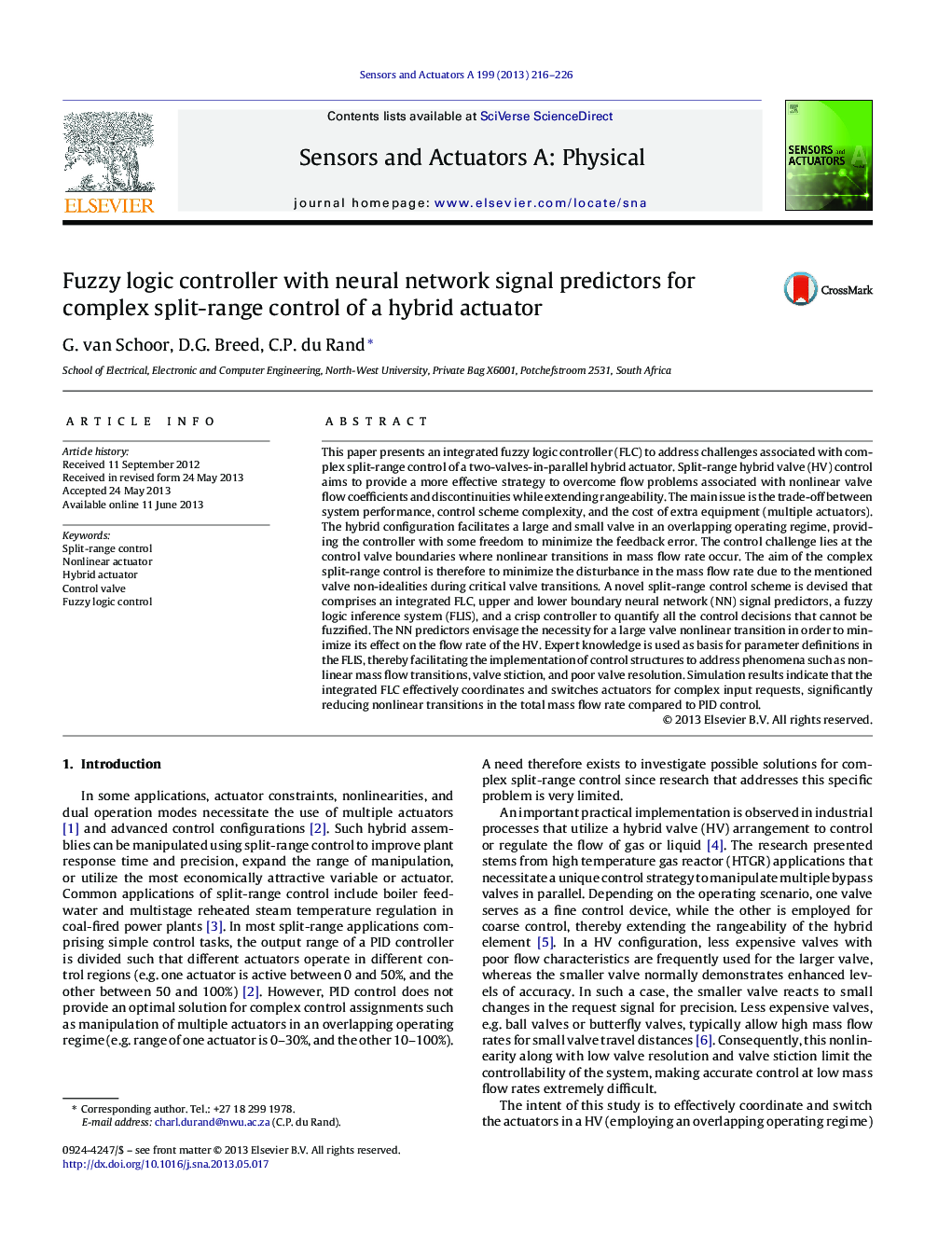| کد مقاله | کد نشریه | سال انتشار | مقاله انگلیسی | نسخه تمام متن |
|---|---|---|---|---|
| 736259 | 1461901 | 2013 | 11 صفحه PDF | دانلود رایگان |

• An integrated fuzzy controller is proposed for complex split-range control of a multiple nonlinear actuator.
• The controller effectively coordinates and switches actuators implementing an overlapping operating regime.
• Neural network signal predictors envisage complex control scenarios to improve control precision.
• Expert knowledge is used to address problems such as valve stiction, poor resolution, and nonlinear mass flow transitions.
This paper presents an integrated fuzzy logic controller (FLC) to address challenges associated with complex split-range control of a two-valves-in-parallel hybrid actuator. Split-range hybrid valve (HV) control aims to provide a more effective strategy to overcome flow problems associated with nonlinear valve flow coefficients and discontinuities while extending rangeability. The main issue is the trade-off between system performance, control scheme complexity, and the cost of extra equipment (multiple actuators). The hybrid configuration facilitates a large and small valve in an overlapping operating regime, providing the controller with some freedom to minimize the feedback error. The control challenge lies at the control valve boundaries where nonlinear transitions in mass flow rate occur. The aim of the complex split-range control is therefore to minimize the disturbance in the mass flow rate due to the mentioned valve non-idealities during critical valve transitions. A novel split-range control scheme is devised that comprises an integrated FLC, upper and lower boundary neural network (NN) signal predictors, a fuzzy logic inference system (FLIS), and a crisp controller to quantify all the control decisions that cannot be fuzzified. The NN predictors envisage the necessity for a large valve nonlinear transition in order to minimize its effect on the flow rate of the HV. Expert knowledge is used as basis for parameter definitions in the FLIS, thereby facilitating the implementation of control structures to address phenomena such as nonlinear mass flow transitions, valve stiction, and poor valve resolution. Simulation results indicate that the integrated FLC effectively coordinates and switches actuators for complex input requests, significantly reducing nonlinear transitions in the total mass flow rate compared to PID control.
Journal: Sensors and Actuators A: Physical - Volume 199, 1 September 2013, Pages 216–226